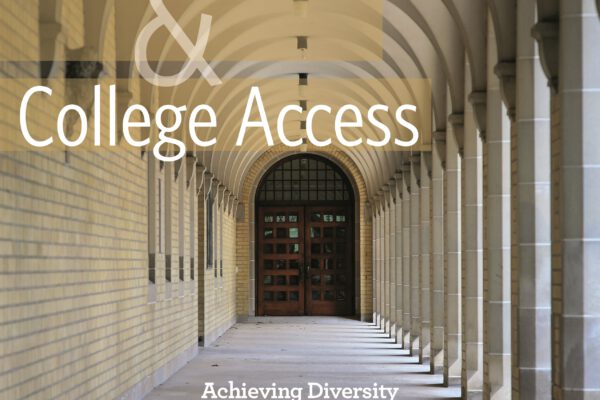In the wake of Women’s History Month, it’s a good time to pause and reflect on the significance of our efforts to honor and uplift women. Amidst the flurry of acknowledgments and celebrations we see every March, there’s a deeper conversation to be had about how we support women on their professional journeys in higher education.
We know the numbers. The most recent edition of the American College President Study (ACPS) shows that the gender gap persists in higher education leadership. Though the number of women presidents has grown slightly (2.7 percent since 2017), they remain significantly outnumbered by men, 2:1. This disparity is even larger for women of color. Notably, as we think of how best to close this gap, women tend to have different career paths to the presidency compared to men, often rising through the academic ranks rather than coming in as external hires.
The leadership attribute continuum
In her 2018 book Leadership: In Turbulent Times, Doris Kearns Goodwin posits a number of questions: Are leaders born or made? Where does ambition come from? How does adversity affect the growth of leadership? Do the times make the leader or does the leader shape the times? How can a leader infuse a sense of purpose and meaning into people’s lives? What is the difference between power, title, and leadership? Is leadership possible without a purpose larger than personal ambition?
Though Goodwin poses these in a binary fashion, I see the foundation of these either/or questions as the importance of understanding the difference between the word “leader” and the action of “leadership.” When one assumes a new title with more responsibility (e.g., president or chancellor) there is an obligation to demonstrate leadership skills that are purpose-driven and bigger than self, ego, or title.
I believe that there are no definitive answers to questions that revolve around whether leaders are born or made, whether leadership is learned or innate, and what the qualities are of female leaders versus male leaders. Each of these answers is on a continuum and includes multiple perspectives. Successful leadership, and in this case leadership for women presidents, includes all of the above: leadership is both internal and also learned; leadership qualities vary by person and gender. However, there is a common denominator in the literature that asserts successful leaders embody and demonstrate some common attributes: humility, honesty, transparency, vulnerability, vision, and ethical behavior.
Leading initiatives and building relationships to lift others
One of my professional opportunities this year, following my 12-year presidency at the University of La Verne, is helping to lead an international initiative for the International Association of University Presidents (IAUP). This initiative focuses on strategic leadership skills for women university presidents, rectors, and chancellors. It also deals with how male and female presidents globally can create pathways, pipelines, and professional opportunities for women to ascend into executive leadership roles in higher education. Through this initiative, IAUP will produce a publication spotlighting female international presidents and their pathways to the presidency as well as podcasts with ACE spotlighting these same women.
In this upcoming publication, the authors often talk about the challenges they faced in their careers. One big thing they mention is how another professional inspired them to aim higher and strive for advancement. Another common denominator is their aspiration to always pursue opportunities that had great impact on an institution and students. Essentially, they continually saw their role as moving an agenda that was not related to their own recognition or ego but rather for a greater good.
A new series of interviews titled Voices from the Field 2023: Experiences of Women Presidents in Higher Education found a key ingredient for success: relationships. The five participants emphasized the importance of mentors and peers, especially other women leaders, in their journeys to the top.
They mentioned challenges like feeling lonely in the role and dealing with new leadership issues, which makes having mentorship networks crucial. Mentors, both men and women, played a big part in helping these women reach their goals. They also stressed the importance of having a diverse group of mentors and highlighted how peers and friends provided essential support. The message is clear: women in higher education leadership need each other. By building strong relationships, we can create a future where the presidency isn’t just attainable for women, but truly fulfilling.
For instance, Tuajuanda C. Jordan, president of St. Mary’s College of Maryland, shared that she did not initially plan to become a college president; instead, a supervisor and mentor recognized something in her and encouraged her to pursue the role. Jordan and Susan C. Lane, president emerita of the New England Institute of Art, also spoke highly of the relationships and mentorship forged through national and regional professional associations and their women-focused initiatives, like the ACE Women’s Network and HERS.
“Whenever a woman thinks she wants to become a college president, the first thing she needs to do is find a mentor,” Jordan said. “You need to have a chief mentor, but you must have multiple mentors. The second thing she needs to do is find a support group. Otherwise, it is going to be a hard path. The presidency is only getting more challenging, so one mentor is not going to be able to help you navigate everything and thrive. There must be a group of people, and you might even need multiple groups to help you thrive. You can have one group for advice and support and another group for self-care because it is all important.”
Yves Salomon-Fernández, president of Urban College of Boston, said that for her, learning happens in a variety of places and from a variety of people, including her students—who often have a better sense of work-life balance, are more in tune with their socioemotional needs, and are more dedicated to self-care than the current generation. One of the things she’s learned is courage, and that it has been a theme throughout her career.
“Whether it is the courage or audacity to tackle hard things, to dream big on behalf of and with our students, faculty, and staff, and to implement those aspirations. It takes courage to change those aspirations from just dreams to reality,” she said.
Can we make it?
Based on ACPS data, ACE estimates that higher education would need to retain 500 women presidents and hire two times more women than men into the presidential role in the next five years to achieve gender parity. To achieve gender equity and be reflective of the current student population, 1,800 women presidents would need to be hired in the next four years.
Can we make it? I believe success largely hinges on those in power now. As presidents of higher education institutions throughout the United States and globally—both men and women—we have a duty to cultivate an environment where future female leaders can thrive. This means embodying the qualities of ethical, authentic, and humble leadership.
If you have any questions or comments about this blog post, please contact us.



